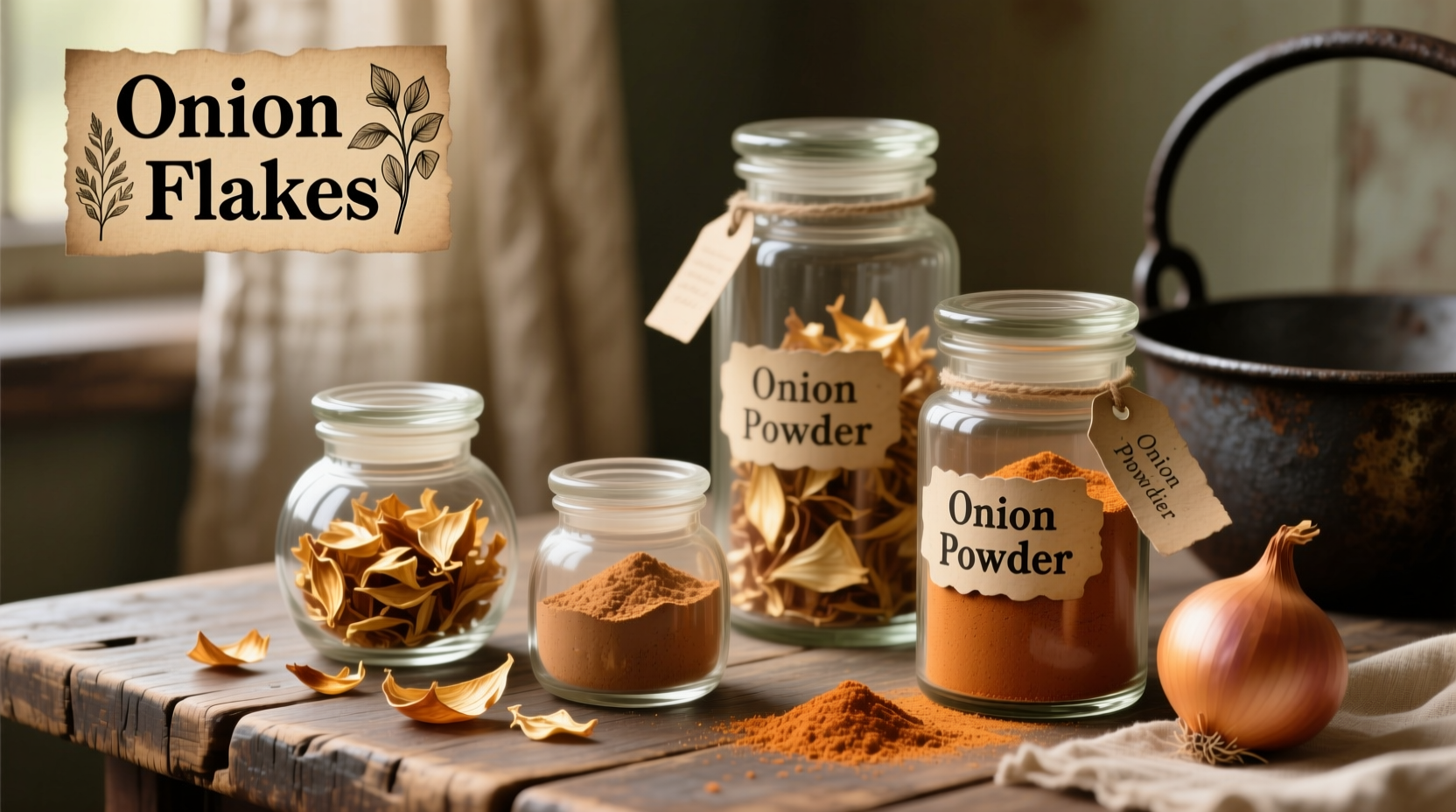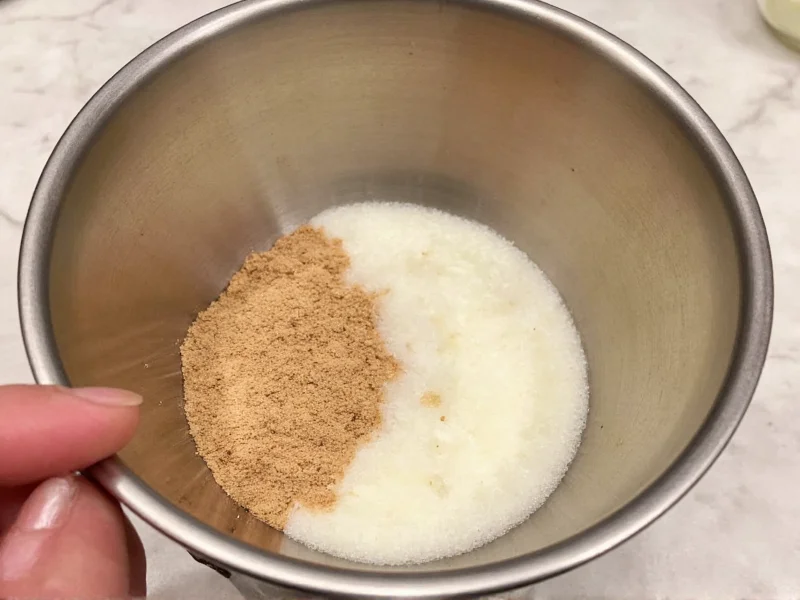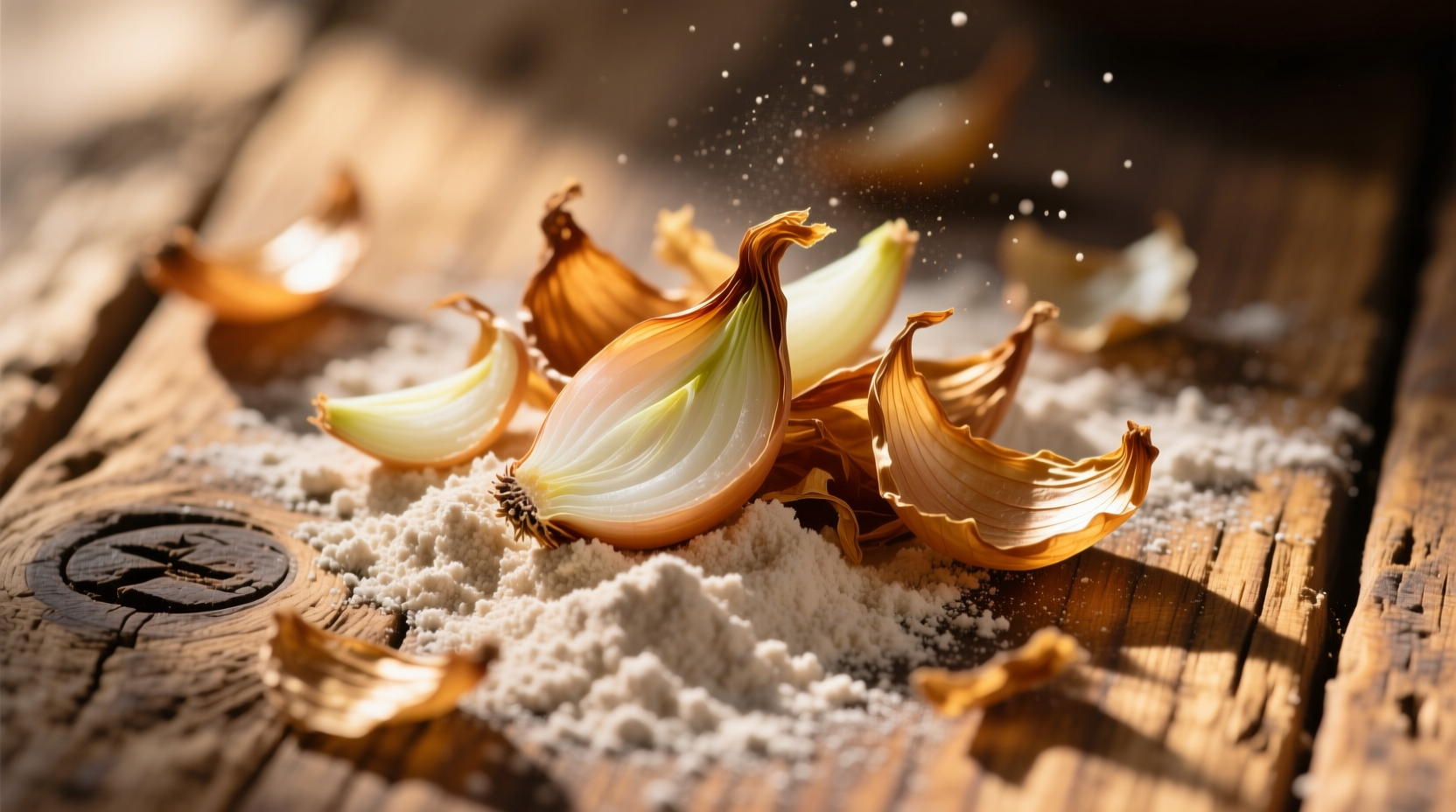Staring at a recipe calling for onion powder while holding onion flakes? You're not alone. Many home cooks accidentally double or triple the onion flavor by using equal measurements, ruining sauces or rubs. This mistake stems from not understanding the critical concentration difference between these dehydrated forms.
Why Onion Flakes and Powder Aren't Interchangeable
Onion powder undergoes finer grinding, intensifying its flavor compounds. Bon Appétit confirms powder is approximately three times stronger than flakes due to increased surface area. Flakes retain slight granularity from partial dehydration, offering milder taste and textural interest. Nutritionally, USDA FoodData Central shows identical macronutrient profiles per 100g (327 kcal, 10.5g protein), but powder's density means smaller volumes deliver equivalent flavor.

When to Use Each: Critical Application Scenarios
Choosing wrong affects dish outcomes. Bon Appétit's research shows professional kitchens strictly separate uses based on texture needs and dissolution properties.
| Product | Best For | Avoid When | Why |
|---|---|---|---|
| Onion Flakes | Salad toppings, baked potatoes, casseroles | Thin sauces, smooth soups, dry rubs | Grainy texture disrupts smoothness; mild flavor gets lost |
| Onion Powder | Marinades, spice rubs, gravies, dressings | Garnishing, chunky salsas, texture-focused dishes | Dissolves completely; overpowering if mis-measured |

Accurate Conversion: Your Step-by-Step Guide
Follow this ratio universally validated by culinary sources:
- 1 teaspoon onion powder = 1 tablespoon onion flakes
- 1 tablespoon powder = 3 tablespoons flakes
Allrecipes emphasizes this 1:3 ratio prevents excessive saltiness since flakes contain less concentrated compounds. Never substitute by weight—powder's density means 10g powder equals 30g flakes flavor-wise.
Avoid These Common Substitution Traps
Even experienced cooks trip on these pitfalls:
- Mistake: Using 1:1 ratio in meat rubs
Result: Flakes won't adhere properly; powder burns easily if over-applied - Mistake: Substituting in creamy soups
Result: Flakes create gritty texture; powder dissolves but requires 30% less quantity - Mistake: Ignoring freshness
Solution: Check for darkening or musty smell—both lose potency after 18 months (USDA storage guidelines)
Pro Tips for Perfect Results
Maximize flavor while avoiding errors:
- Rehydrate flakes (1 tbsp hot water per tbsp flakes) for sauce use
- Always add powder late in cooking to preserve volatile compounds
- Store both in airtight containers away from light—USDA data shows 50% flavor loss in 6 months with poor storage
Everything You Need to Know
Use 1 tablespoon of onion flakes = 1 teaspoon of onion powder. This 1:3 ratio accounts for powder's tripled concentration, as verified by Allrecipes' culinary testing. Never substitute equal volumes—this causes overpowering flavor.
Avoid powder for toppings—it dissolves into the potato skin, losing visual appeal. Onion flakes provide the desired texture and milder flavor burst. Bon Appétit's guide confirms flakes are essential for texture-focused applications like this.
Both last 18-24 months in airtight containers away from light and moisture, per USDA FoodData Central. Discard if they darken significantly or smell musty—this indicates flavor degradation. Powder may clump first due to finer texture.
No meaningful difference per weight. USDA data shows identical nutrition (327 kcal, 10.5g protein per 100g). However, powder's density means 1 tsp delivers equivalent nutrients to 1 tbsp flakes—always measure by substitution ratio, not weight.
Balance with acid or sweetness: Add 1 tsp vinegar or 1 tbsp sugar per teaspoon of excess powder. For soups/sauces, dilute with broth. Never add more flakes—they won't counteract the concentrated powder flavor.











 浙公网安备
33010002000092号
浙公网安备
33010002000092号 浙B2-20120091-4
浙B2-20120091-4